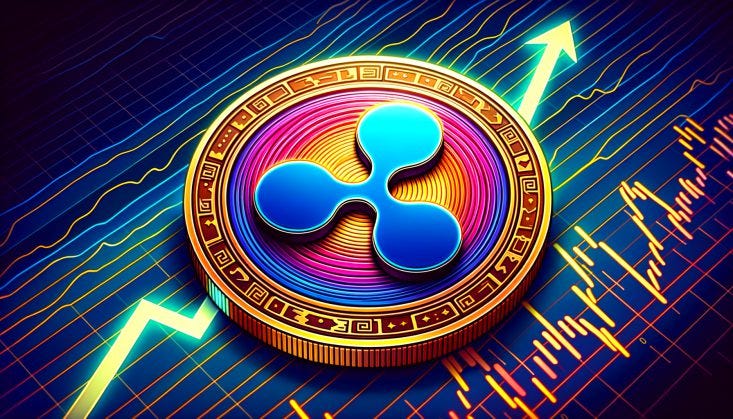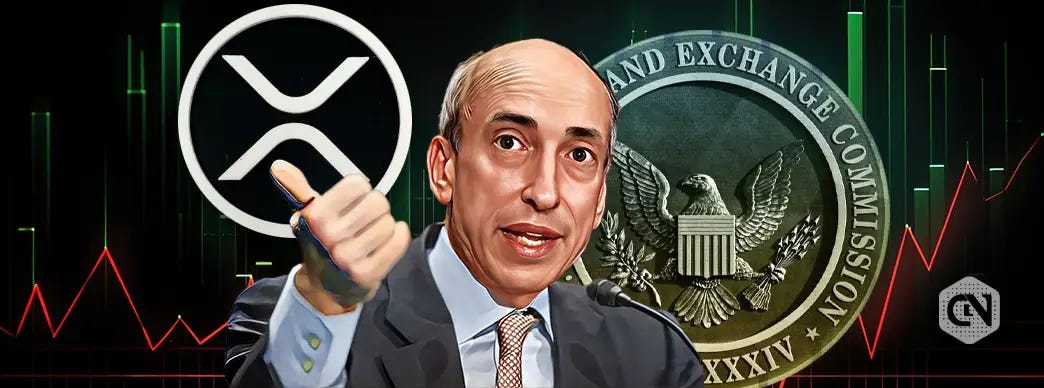“XRP: The Digital Asset Set to Revolutionize Global Finance—What You Must Know Before It’s Too Late”
XRP: A Comprehensive Guide to Its Role, Utility, and Future Potential
XRP has emerged as a cornerstone of the evolving global financial system, offering innovative solutions to long-standing issues in liquidity and settlement. Unlike many cryptocurrencies primarily targeted at retail users, XRP was designed for institutional use, aiming to transform how cross-border payments and financial transactions occur. This guide explores XRP's purpose, functionality, adoption, and its potential to reshape global finance.
Purpose and Design of XRP
XRP was created by Ripple Labs to address critical challenges in the financial sector, specifically in liquidity and settlement. Traditional financial systems face inefficiencies due to outdated processes, high costs, and systemic risks associated with insolvencies and unbacked derivatives. XRP aims to bridge these gaps by providing a fast, low-cost, and scalable solution for financial institutions.
Ripple’s technology, RippleNet, facilitates seamless cross-border transactions by leveraging XRP as a bridge currency. This allows institutions to bypass the need for pre-funded accounts in multiple currencies, reducing costs and improving efficiency. Unlike Bitcoin or Ethereum, which cater to decentralized finance (DeFi) or individual transactions, XRP’s utility is institutional, making it a foundational component of a tokenized global economy.
Challenges in the Traditional Financial System
The traditional financial landscape is plagued by several key challenges, including high debt levels, systemic risks from derivatives markets, and inefficient settlement processes. Banks often rely on slow, costly systems that can take days to settle transactions, creating liquidity bottlenecks. Moreover, central banks face mounting pressures to innovate as they struggle to manage monetary inefficiencies.
XRP addresses these issues by acting as a bridge between outdated systems and modern financial infrastructure. By enabling instant settlements and providing liquidity on demand, XRP helps institutions overcome cross-border payment hurdles. This makes it a vital tool for enhancing interoperability between digital assets and traditional currencies, paving the way for a more efficient and interconnected global financial system.
How XRP Works and Key Features
XRP operates on the XRP Ledger (XRPL), a decentralized, open-source blockchain that uses a consensus mechanism instead of energy-intensive proof-of-work systems. This design allows for faster, more efficient transactions, making XRP environmentally friendly and cost-effective.
Key features include:
Speed: XRP transactions settle in 3-5 seconds, significantly faster than traditional banking systems and many cryptocurrencies.
Cost: Transaction fees are minimal, typically around 0.00001 XRP, making it ideal for microtransactions and high-volume transfers.
Scalability: The network can handle up to 1,500 transactions per second (TPS), with potential for higher capacity as technology evolves.
Interoperability: XRP bridges various currencies, enabling seamless value transfer across different financial systems, including fiat, digital assets, and commodities.
How to Use XRP for Beginners
If you're new to XRP, getting started is simple:
Choose a Wallet: Select a secure wallet to store your XRP. Options include hardware wallets like Ledger, mobile wallets like Trust Wallet, or desktop wallets compatible with XRPL.
Buy XRP: You can purchase XRP on major cryptocurrency exchanges such as Binance, Coinbase, or Kraken. Ensure the exchange supports XRP trading and follows local regulations.
Transfer and Store: Once purchased, transfer your XRP to your wallet. Always double-check wallet addresses before transferring funds.
Use XRP for Payments: XRP can be used for peer-to-peer payments, cross-border transfers, or as a liquidity tool for businesses. Ripple’s On-Demand Liquidity (ODL) service leverages XRP to facilitate instant, low-cost international transactions.
Institutional Adoption and Partnerships
XRP’s strategic importance is highlighted by its partnerships with over 300 financial institutions, including banks like Santander and PNC Bank. These collaborations aim to modernize the global financial infrastructure, with RippleNet playing a crucial role in improving settlement times and reducing costs.
As regulatory clarity improves, institutional adoption is expected to accelerate. Central banks and governments are exploring the use of XRP in tokenizing assets and issuing central bank digital currencies (CBDCs). These developments position XRP as a key enabler of a dual monetary system, integrating private sector innovations with public sector oversight.
Supply, Scarcity, and Price Predictions
XRP has a finite supply of 100 billion tokens, with a portion burned during each transaction, creating a deflationary effect over time. This scarcity model is expected to drive value growth as demand increases, especially for institutional-scale transactions.
Price projections vary widely, with conservative estimates ranging from $5-$10 in the short term to more optimistic forecasts of $100 or more in the long term. Some speculators envision XRP reaching $500 or even $10,000, driven by global adoption, regulatory clarity, and its role as a potential reserve currency in a tokenized economy.
Regulatory Challenges and Future Outlook
Ripple’s ongoing legal battle with the U.S. Securities and Exchange Commission (SEC) has been a focal point for XRP’s future. The SEC alleges that XRP is a security, while Ripple argues it functions as a currency. A partial legal victory in mid-2023 classified XRP as not a security when sold to retail investors, but institutional sales remain under scrutiny.
Despite regulatory hurdles, Ripple’s partnerships and behind-the-scenes developments signal a bright future. Countries like Japan and the UK have taken favorable stances on XRP, recognizing its utility in cross-border payments. As global regulatory frameworks evolve, XRP is poised to play a central role in the tokenized financial ecosystem.
The Vision of a Unified Financial System
XRP’s long-term vision involves creating a unified financial system where digital assets and traditional currencies coexist seamlessly. This system would cater to both central banks and private institutions, with XRP enabling liquidity and interoperability. Emerging technologies like quantum computing, artificial intelligence, and blockchain are expected to enhance this framework, ensuring transparency, efficiency, and global connectivity.
In conclusion, XRP is not just a digital asset but a cornerstone of a transformative financial future. Its utility in facilitating cross-border transactions, combined with growing institutional adoption and regulatory clarity, positions XRP as a pivotal player in the global financial system. Whether you’re an individual investor or an institution, understanding XRP’s role and potential is crucial in navigating the evolving world of digital finance.
Thank You for Joining Us on This Journey!
We truly appreciate you taking the time to explore the world of XRP with us! The future of global finance is exciting, and we’re thrilled to have you along for the ride. If this article has opened your eyes to the potential of XRP and the incredible innovations shaping our financial landscape, we’d love to hear from you.
💬 Your support means everything to us! If you found this guide valuable, please take a moment to hit LIKE and SUBSCRIBE. Every click helps us grow and bring you more insightful content that you won’t find anywhere else. Your engagement fuels our mission to provide cutting-edge, expert-backed information that empowers you to navigate the digital economy with confidence.
🌟 Share this with friends, family, and fellow investors—let’s spread the knowledge and build a stronger, more informed community together! We can’t wait to bring you more exclusive updates, tips, and future-proof insights as XRP and the world of digital finance evolve.
Thank you for being part of our journey—let’s keep growing and learning together! 🚀💙









